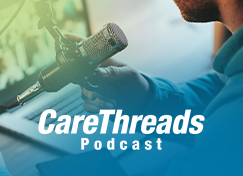For over two decades, tech companies and government agencies have been moving toward the goal of interoperability in healthcare technology. At long last, standards and protocols are in place -- and continually being improved -- to support open data exchange networks. As a result, healthcare providers, including human services, post-acute providers and specialty practices, have more opportunities to participate in alternative payment models and adapt more readily to the evolving payment landscape.
This four-part series covers the forces that are driving interoperability, as well as the future vision of open networks, and what it all could mean to your organization.
Part 1 explained the forces driving the need for better ways to share healthcare information. Part 2 outlines the entities that will make this transformation possible. Part 3 explores how to choose a QHIN partner. Now, Part 4 will examine elements of QHIN implementation, use cases and benefits.
Interoperability in Healthcare: QHIN Implementation, Use Cases and Benefits
Qualified Health Information Networks (QHIN) can support a range of use cases, including treatment, payment, healthcare operations, public health reporting and patient access to their records. These are referred to as Exchange Purposes (XPs), and all QHINs must facilitate a request for this data. The difference lies with how QHINs facilitate those requests and provide that information to you as a participant. The data uses the same network that all QHINs have built too, but there is value in what your current technology vendor can do with the data.
Complete Information Supports Decision-Making and Compliance
By enabling data exchange, QHINs help ensure providers have access to complete, up-to-date information that has the potential to improve decision-making and reduce redundant tests. The Trusted Exchange Framework and Common Agreement™ (TEFCA) network also supports the exchange of more robust types of data than before, offering participants more holistic views of individuals to support a whole-person care approach.
A QHIN can help your organization stay compliant with interoperability mandates designed to align technology with regulatory requirements, such as the 21st Century Cures Act and TEFCA. Netsmart has a proven track record in meaningful use through developing electronic health records (EHRs) certified by the Assistant Secretary for Technology Policy and Office of the National Coordinator for Health Information Technology (ASTP/ONC). Based on this experience, Netsmart takes into account interoperability mandates, so your organization can concentrate on providing care to your communities. As the data exchange landscape shifts toward a more regulatory-based landscape with TEFCA at the core, remaining in compliance with certification requirements becomes increasingly important.
Preparing for TEFCA and QHIN Participation
As outlined in Part 3 of this blog series, getting the most out of joining a QHIN starts with assessing your current interoperability capabilities:
- Identify gaps in your data exchange processes and data needs
- Collaborate with your EHR vendor to ensure technical readiness and ensure they can accommodate the QHIN data to be used with your EHR
- Explore QHIN options and compare their offerings for your current EHR features and functionality
- Understand and create a plan for your organization to use or increase the use of FHIR-based integrations
Once you've determined which QHIN will work best for your organization, you can begin nailing down specifics and start planning implementation.
Costs, Implementation and Onboarding
Costs vary by QHIN vendor and may include membership fees, transaction fees and additional charges for optional services.
Onboarding typically includes:
- Technical integration into your EHR
- Staff training
- Testing and validation of data exchange
- Establishing compliance with TEFCA requirements/signing agreements to participate
For Netsmart clients, joining the TEFCA network is built into our existing integration processes and capabilities. There are legal agreements specific to TEFCA to sign, but all technical implementations are much easier to facilitate as an already existing EHR client, assimilating into already existing workflows.
Security and Privacy
QHINs are required to meet strict security and privacy standards under TEFCA, including compliance with HIPAA and other relevant regulations. All QHINs are HITRUST-certified and ensure robust security backing for all network transactions and therefore must have incident response and mitigation procedures in place in case of a security incident. It’s important to understand the full enterprise security plan for the QHIN you decide to use and how they protect all of their solutions/programs, not just QHIN.
It's important to understand the full enterprise security plan for the QHIN you choose and how they protect all their solutions/programs, not just QHIN. With Netsmart having a robust history as an ONC-certified EHR vendor, your data is protected in all facets of exchange. The Netsmart enterprise-wide security procedures and incident response plans are created by our governance, risk and compliance team.
Regulatory Benefits and Use Cases
By selecting a QHIN and participating in a nationwide interoperability framework, your organization can stay ahead of regulatory changes, improve patient outcomes and reduce the administrative burden of managing multiple data exchange partners. With the changing regulatory landscape, including the HTI-1 and HTI-2 rules, all ONC-certified vendors must abide by those parameters. TEFCA is taking a more central role in helping to prep organizations and users to be compliant with those regulatory standards. For this reason, QHINs with a rich history of ONC certification and who have regulatory staff will have an advantage.
Exchange Purposes
Under TEFCA, QHINs will facilitate the exchange of multiple types of data, referred to as Exchange Purposes (XPs). Initially, there were six core XPs that were revealed for TEFCA:
- Treatment –To support the provision, coordination or management of healthcare among providers
- Payment–For activities related to billing, claims and reimbursement under HIPAA
- Healthcare Operations–For administrative, quality improvement and other operational functions
- Public Health–To support public health authorities in disease surveillance, reporting and response
- Government Benefits Determination – To help determine eligibility for government programs, such as Medicaid.
- Individual Access Services – To empower individuals to access their own health data securely and conveniently
These XPs have now been expanded to include subtypes that can be read about here, via the RCE approved resource and SOP. As mentioned previously, all QHINs will be required to support the exchange of these XP’s, and all participants of QHINs will be required to respond to Treatment and Individual Access Services. An important deciding factor when choosing a QHIN is to understand the workflows to receive this information into your EHR, as well as the capabilities to persist and action the information.
Be sure to check out the first three installments of the Interoperability in Healthcare series:
Part 1 -- What’s Driving the Need for Change
Part 2 -- The Creation of TEFCA and QHINs
Part 3 -- Evaluating QHINs for Your Organization
Ben Rosen is a senior client success manager and business unit owner for the interoperability solution suite at Netsmart. With more than a decade of healthcare experience, Ben has led numerous initiatives to integrate healthcare systems and enhance data sharing across the care continuum. His dedication to advancing healthcare interoperability drives his active involvement in industry initiatives and standards organizations, where he provides insight for frameworks such as HL7 FHIR, USCDI and others. Ben holds a Bachelor of Science in kinesiology from Kansas State University and a Bachelor of Science in nursing degree from the University of Nebraska Medical Center.







/implementing-ai_gmd_wbn-pt2.png)
